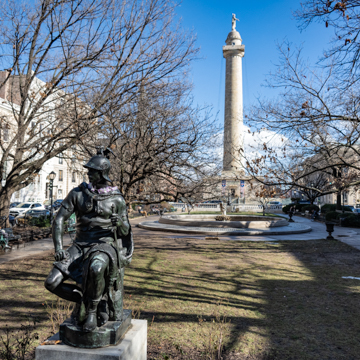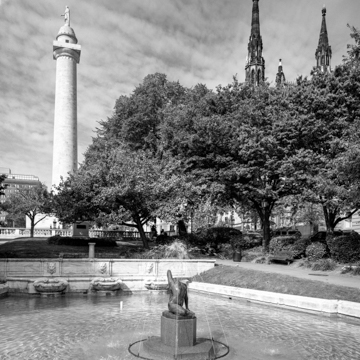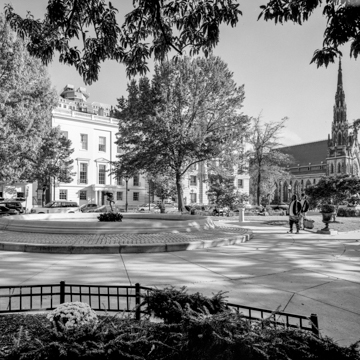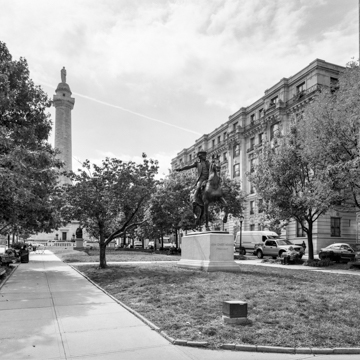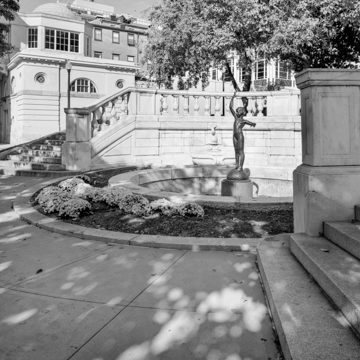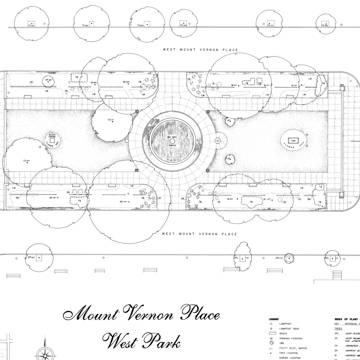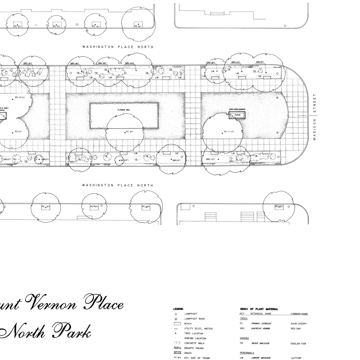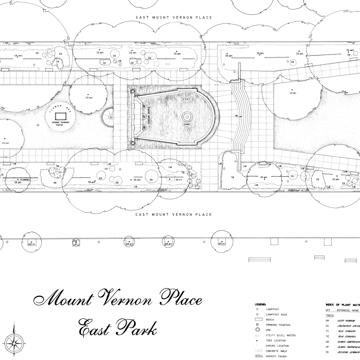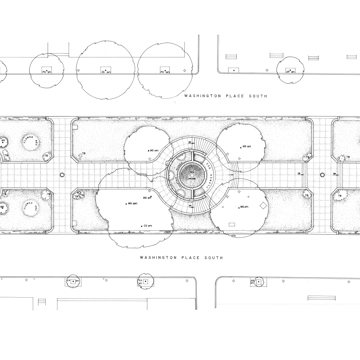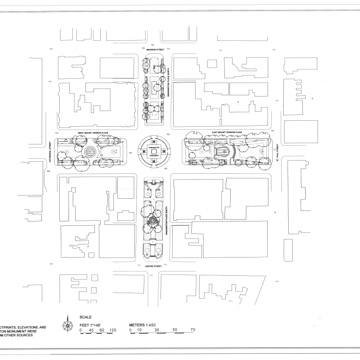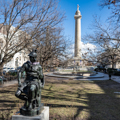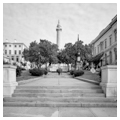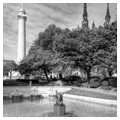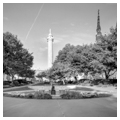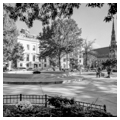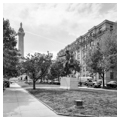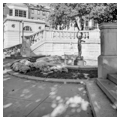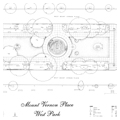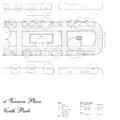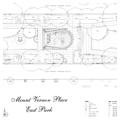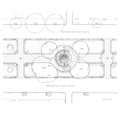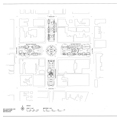Mount Vernon Place is one of the best conceived and executed city planning projects of the nineteenth century. Begun as the site of Baltimore’s monument to George Washington, Mount Vernon Place became a fashionable urban park, residential neighborhood, and the centerpiece of the city’s arts and culture district. The site, selected for its dramatic views, originated as Colonel John Eager Howard’s Belvidere estate. City managers optimistically projected Baltimore’s expansion, extending Charles Street to the site. Mills laid out the current configuration of squares on north-south and east-west axes, named respectively Washington Place and Mount Vernon Place in honor of Washington and his Virginia home. In 1875, Frederick Law Olmsted’s Boston firm reconfigured Mills’s rectilinear classical design to create a more curvilinear and picturesque landscape, turning lawns into sculpture gardens. In 1917, a redesign by Carrère and Hastings of New York followed City Beautiful ideals of symmetry, uniformity, and axial alignment.
Along the perimeter of Mount Vernon Place is some of the city’s finest architecture, ranging from Greek Revival to Beaux-Arts classical and designed by such noted architects as Niernsee and Neilson, Edmund G. Lind, Stanford White, John Russell Pope, and Delano and Aldrich, beginning in the 1840s. The opulent residences were joined in the twentieth century by fashionable apartment buildings and hotels. The Peabody Institute, begun in 1858, was the first to distinguish Mount Vernon Place as an area of arts and culture, followed by the Walters Art Museum in 1909.
References
Lavoie, Catherine C. “Washington Memorial, Mount Vernon Place,” HABS No. MD-71, Historic American Buildings Survey, 2005. Prints and Photographs Division, Library of Congress, Washington, D.C.
Miller, J. Jefferson, II. “Baltimore’s Washington Monument.” Master’s thesis, University of Delaware, 1962.
Mills Papers, 1820–1835, Maryland Historical Society, Manuscript Collection.
Morton, W. Brown, “Mount Vernon Place Historic District,” Baltimore City, Maryland. National Register of Historic Places Inventory-Nomination Form, 1971. National Park Service, U.S. Department of the Interior, Washington, D.C.


